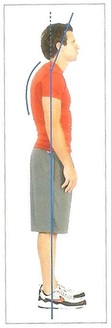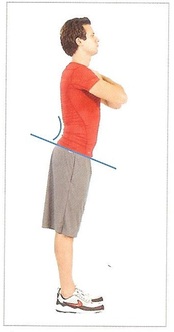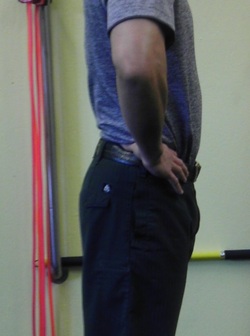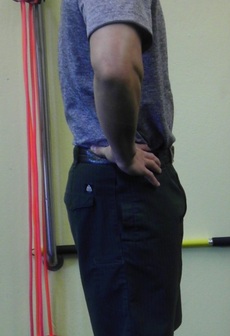Improving Posture with Exercise Takes a Targeted Approach Having great posture requires optimal strength in relative muscles. More specifically, this means that a muscle must have an optimal strength compared to its opposing muscle (antagonist). You can be very strong, but it doesn’t always equate to good posture, nor does being extremely flexible. Good posture requires a balance of strength and flexibility in muscles in relation to each other. So let’s take a quick look at good posture and compare it to some of the most commonly seen postures that can cause pain or injury. Good Posture 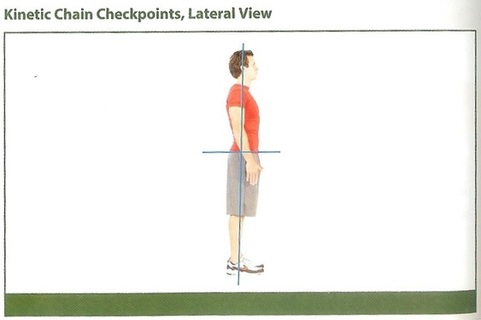 Pic 1 Pic 1
Bad Posture Examples
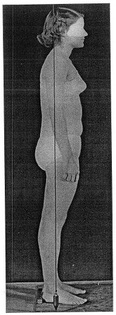 Pic 4 Pic 4 Flat Back Posture
Picture 4 from Kendall (2005) Picture 2 shows a forward head and rounded upper back/shoulders. This is commonly seen for people adapting to the computer posture. Strengthening is typically needed in the back muscles along with lengthening in the chest muscles. Trying to figure out what lumbar/pelvic posture you have is tricky without the help of a health or fitness professional. Even then, many get it wrong. It is important to properly get assessed in order to design the right exercise program that will improve your posture. Computer Posture  Commonly weak muscles contributing to bad posture:
Getting to Know Good Posture Here’s a few drills to get you familiar with improved posture. Once you get a good sense of posture you can then move on to the workout below. 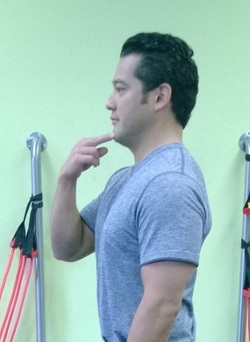 Chin Tuck: With a good upright sitting or standing posture, look straight forward and pull your chin directly back  Abdominal Bracing: Simply pull your belly button in while in a good tall posture. Find a Neutral Pelvic Tilt: Many have excess anterior tilt, some are neutral, some have excess posterior tilt. Place your hands on your hips and find a neutral tilt by pushing more with your thumbs or forefinger. Finding neutral pelvic tilt can vary in difficulty depending on the person and their posture. The guidance of a professional is usually needed. 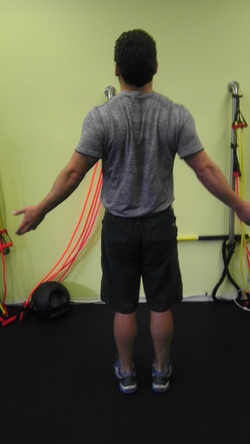 Standing Shoulder Retractions: With a good, tall standing posture pull your shoulder blades together while bringing your arms back at the same time. Be sure to keep your shoulders down and back the entire time. Also, keep your abs tight as there should be no extraneous movements in the spine. Beginner Strength Workout for Posture Given that most people are weak in the same areas, we can safely build a quality workout to strengthen these muscles. Give it a try! This workout requires only a pair of dumbbells, so no excuses! Warmup - 1-2 sets each. No equipment needed. Planks Bridges Side Plank Clamshells Workout, Circuit 1 - 2 sets of 15-20 reps. Equipment needed: dumbbells Squats Rows Hip Hinge Tricep Extensions in bent over position Workout, Circuit 2 - 2 sets of 15-20 reps. Equipment needed: dumbbells Serratus Exeternal Rotator Cuff Bird Dogs References
1)Clark, Lucett. 2011. NASM’s Essentials of Corrective Exercise Training. Philadelphia, PA. Lippincott Williams & Wilkins. 2)Kendall, McCreary, Provance, Rodgers, Romani. 2005. Muscles, Testing and Function with Posture and Pain, 5th Edition. Baltimore, MD, Lippincott Williams & Wilkins. pp. 58-70. 3)McGill. 2007. Low Back Disorders: Evidence-Based Prevention and Rehabilitation, Second Edition. Champaign, IL. Human Kinetics.
1 Comment
|
AuthorJerry Yuhara, CPT, CSCS, CMT #75123 Categories
All
JY Fitness
299 California Ave, Suite 120 Palo Alto, CA 94306 650-485-1240 contact@jyfit.com Contact Copyright JY Fitness 2024, All Rights Reserved. Find us on Nextdoor.com
|
